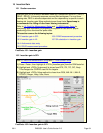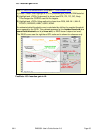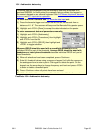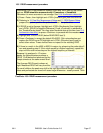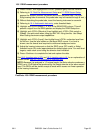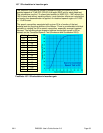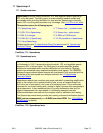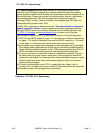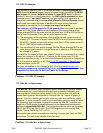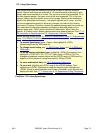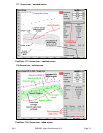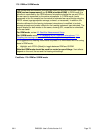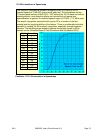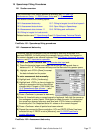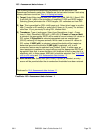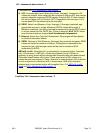
0611 RM500SL User’s Guide Version 2.8 Page 72
17.4 DSL 5.0 changes
FastFacts 17.4: DSL 5.0 changes
17.5 NAL-NL1 in Speechmap
FastFacts 17.5: NAL-NL1 in Speechmap
The
NAL
-
NL1
procedure seeks to amplify speech such that all bands of speech
are perceived with equal loudness while maximizing speech intelligibility and
ensuring that the wearer perceives speech to be no louder than that which a
normal hearing person would perceive. Although NAL-NL1 states its goals for
speech, it derives insertion gain targets assuming noise as a verification signal.
Because it is more accurate to verify a non-linear fitting using the signal for which
the procedure was developed, Audioscan converts the NAL-NL1 insertion gain
targets to LTASS targets for amplified speech in the Speechmap environment,
resulting in Speechmap/NAL-NL1. The conversions use the same adult average
RECD and REUG as used in DSL. The RESR targets are from Hearing Aids
(Dillon, Thieme Publishing, 2001, p274).
An insertion gain version is available by selecting [Insertion gain] from the REM
tests menu. The pink noise stimulus should be used.
The Audioscan version of DSL 5.0 includes provision for
bone conduction
and
ABR threshold, binaural targets, targets for speech levels from 50 to 75 dB SPL,
new targets for children, targets for adults and new RECD default values for
children (1 month to 10 years) and adults. The UWO child’s spectrum has been
removed and an “own voice” spectrum has been added. As a result of a re-
analysis of published data, the vocal effort effects for Soft and Average speech
levels have been made the same. In addition, the target symbol has been
elongated to indicate that the fit-to target is a range, not a point.
The children’s LTASSa targets for 70 dB speech differ from those in previous
versions of DSL. These differences are functions of the hearing loss and age
(where average RECDs are used) and can be more than 10 dB at 250 Hz but are
less at other frequencies. There are two main reasons for this.
1) The introduction of the requirement that amplified speech peaks should not
exceed UCL. This has the largest impact at 250 Hz and for losses exceeding
50 dB SPL. Targets are generally reduced less than 5 dB for losses under 60
dB HL if RECDs have been measured.
2) The introduction of new default average RECDs. Where average RECDs are
used, this generally results in a target decrease in addition to that caused by
the change in 1) above.
In evaluating the impact of these new targets, it must be remembered that, in most
cases, the reduction in SII will be 5 -10 points. An SII change from 70 to 60
predicts a reduction of only 1% on the connected speech test while a change from
60 to 50 predicts a reduction of 4%. See 17.10: SII calculation in Speechmap for
more information on the SII.
For more information on the changes in DSL 5.0, visit www.audioscan.com.
Audioscan assumes no responsibility for the validity of these changes; that
responsibility rests with the National Centre for Audiology.



